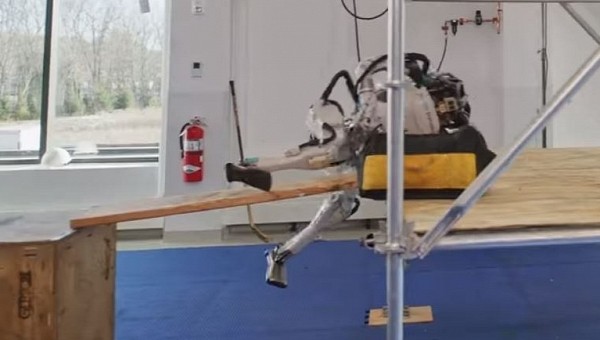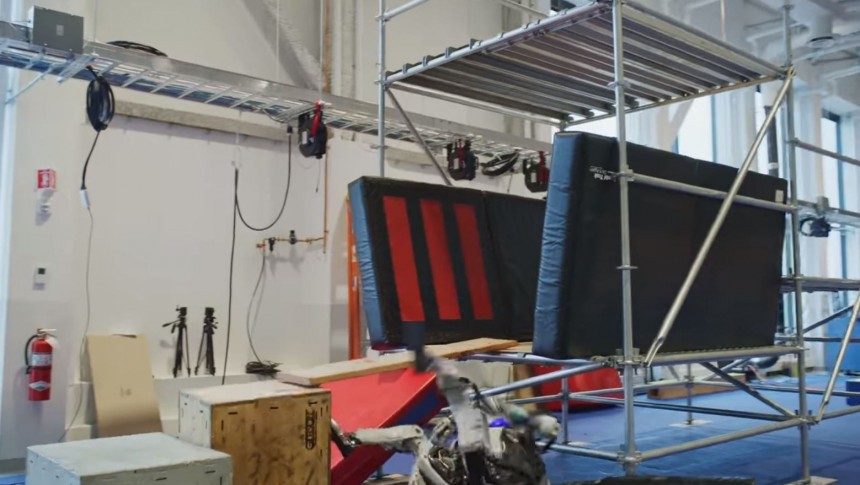Almost three weeks ago, we watched the latest version of Boston Dynamics' robot Atlas at work, and it was somewhat impressive. Not only did the humanoid robot manage to improvise a step from a piece of wood, but it also managed to grab and then throw a bag full of tools. Even then, that last bit was a bit sketchy, but now we have behind-the-scenes footage.
The folks over at Boston Dynamics revealed what may be called a 'blooper reel,' and it features several situations where the humanoid robot that was believed to be capable of taking everyone's jobs away like magic made mistakes. As you will observe, the robot was far from perfect.
In a way, it is a fortunate thing if you are considering what might have happened if the robot was that good independently. Many people might have been left without a job once these robots were ready for work.
While it may have been a blessing in some fields of human activity, where the lives and integrity of human workers would be safe from risk, or without back pain because of carrying heavy objects, other people might not get a job in certain situations because of these robots.
Fortunately for human workers, these robots are incredibly expensive, and they are not capable of performing tasks outside of a dedicated environment.
If you take a good look at this video published by Boston Dynamics on their official social media channels, you will notice that the robot, which does not feel pain and cannot be injured like a human, has several layers of rubber as its landing spot. This was done to mitigate damage, but it looks like someone is looking after Atlas after all.
Another interesting thing that we noticed is the way that the robot balances itself when it feels that things are not going as planned. Just look at it wobbling from side to side or back and forth, and you might think of toddlers who are learning how to walk, as well as of people who are inebriated with alcohol and cannot do the whole balance thing correctly.
To be fair, many clips, if not all, that end up being published online, from stunts to tutorials, involve multiple "takes," as the movie industry describes them. While it was clear that several attempts were required to make this a reality, it is now evident that there is plenty of work required to make a robot like this work, and that it still cannot replace a human on a job site.
Unlike some companies that stage videos to make their products appear more capable than they are, Boston Dynamics shows how its robot failed during filming, so we must tip our hats to them for being honest about it. It probably helps that they are not selling the robot to anyone, and it is a prototype, so it is normal for it to fail while learning how to do some things.
It might be capable of throwing a bag of tools and then doing a backflip, but if it ever tries any of those stunts on a real construction site, the health and safety inspector would write it up for termination, as nobody wants to have a bag of tools flying anywhere.
The risk of getting hit by a flying bag of tools, or a robot that is jumping from anywhere, is too great to consider the potential benefit of an employee that might operate around-the-clock, but could not do so if there is mud, dust, or debris of any kind in the way. For now, at least.
In a way, it is a fortunate thing if you are considering what might have happened if the robot was that good independently. Many people might have been left without a job once these robots were ready for work.
While it may have been a blessing in some fields of human activity, where the lives and integrity of human workers would be safe from risk, or without back pain because of carrying heavy objects, other people might not get a job in certain situations because of these robots.
Fortunately for human workers, these robots are incredibly expensive, and they are not capable of performing tasks outside of a dedicated environment.
Another interesting thing that we noticed is the way that the robot balances itself when it feels that things are not going as planned. Just look at it wobbling from side to side or back and forth, and you might think of toddlers who are learning how to walk, as well as of people who are inebriated with alcohol and cannot do the whole balance thing correctly.
To be fair, many clips, if not all, that end up being published online, from stunts to tutorials, involve multiple "takes," as the movie industry describes them. While it was clear that several attempts were required to make this a reality, it is now evident that there is plenty of work required to make a robot like this work, and that it still cannot replace a human on a job site.
Unlike some companies that stage videos to make their products appear more capable than they are, Boston Dynamics shows how its robot failed during filming, so we must tip our hats to them for being honest about it. It probably helps that they are not selling the robot to anyone, and it is a prototype, so it is normal for it to fail while learning how to do some things.
It might be capable of throwing a bag of tools and then doing a backflip, but if it ever tries any of those stunts on a real construction site, the health and safety inspector would write it up for termination, as nobody wants to have a bag of tools flying anywhere.
The risk of getting hit by a flying bag of tools, or a robot that is jumping from anywhere, is too great to consider the potential benefit of an employee that might operate around-the-clock, but could not do so if there is mud, dust, or debris of any kind in the way. For now, at least.









